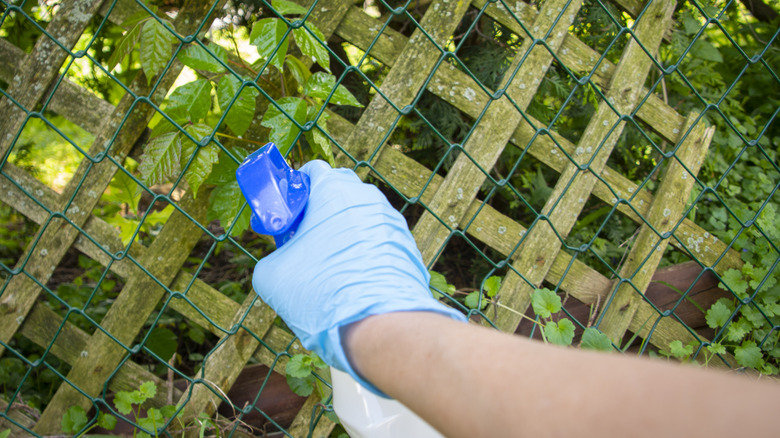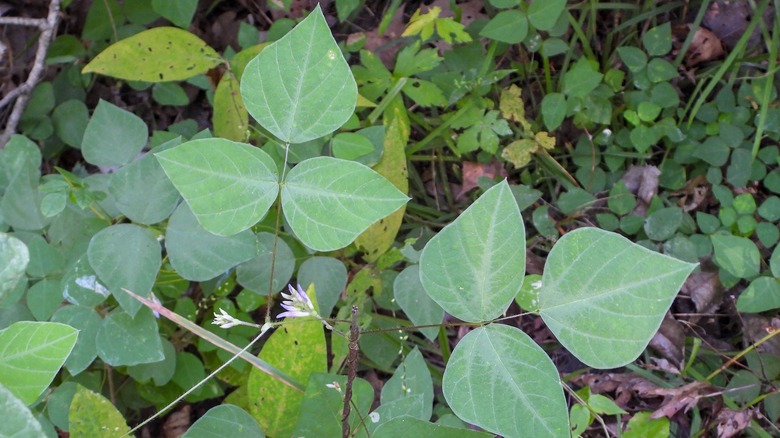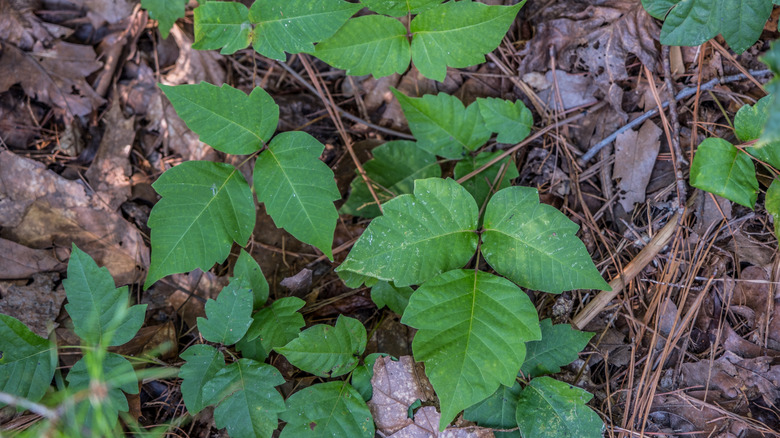The Vining Weed You Might Be Mistaking For Poison Ivy
When a poisonous plant looks similar to one that isn't, it's understandable why you'd want to be cautious around both. The better-safe-than-sorry tactic is a smart card to play, especially when weeding your garden or walking through brush outside. This is especially true for the well-known clustered leaves called poison ivy. Most gardeners and hikers tend to give the plant a wide berth if anything looks remotely similar. One plant that closely resembles poison ivy is the American hog-peanut, which has similar leaves and is found in the same environments.
Knowledge is power, though, and a great way to put your mind at ease is to understand the key differences between American hog-peanut and poison ivy. Upon closer inspection, you'll find that these plants' leaf shapes, surface textures, and fruits vary. And, of course, one is poisonous, whereas the other has perfectly edible parts. This guide will help you identify American hog-peanut and poison ivy so you can safely handle weeds in the garden and enjoy walks outside.
How to identify American hog-peanut
You'd be forgiven for mixing up American hog-peanut with poison ivy, as both share quite a few visual similarities. There are fortunately recognizable differences. American hog-peanut features flat green leaves that are rounded and taper off to a point. They don't have serrated edges on their leaves and won't appear shiny. Another distinguishing feature is that hog-peanut has fine hairs on its stems, whereas poison ivy rarely looks hairy. In the fall, you can expect these plants to have yellow leaves. American hog-peanut also wraps itself around other plants as it grows. Although poison ivy can be found attached to other species, it does not wind itself around in the same way.
There are two types of flowers on this plant as well, which produce edible parts. One pops out of a pod and can be cooked and eaten like other legumes. The other is buried underground and gives the plant its name, as it's a small nut that wild pigs dig up. Although it's viewed as a weed in some respects, often overtaking other plants, the vine can be used as an easy-to-grow ground cover plant. Like poison ivy, it can cover large swaths of ground and climb up other plants and trees.
How to identify poison ivy
Now, how do you identify poison ivy? Its cluster of three leaves with jagged edges is the most obvious visual cue. Some of these edges are subtler and less sharp, eventually rounding out. While the color of the leaves is typically bright green, they can turn yellow and red in the fall. In the spring and early summer, poison ivy leaves have a shiny surface that wears off and becomes matte as the year progresses. The main distinction is the jagged leaves and their growth pattern, which differentiates them from American hog-peanut.
Unlike American hog-peanut, poison ivy produces and releases urushiol, the oil behind the painful and itchy skin reactions afflict many people upon contact. Unfortunately, with climate change, poison ivy is a pesky weed that might start popping up in your yard more and more. The best thing to do is avoid walking through it or touching it, especially if the plant has been broken. If it's rampaging through your garden or nearby woodlands, some of the best ways to kill and get rid of poison ivy are through boiling water, physical covers (like tarps or mulch), or careful weeding.


